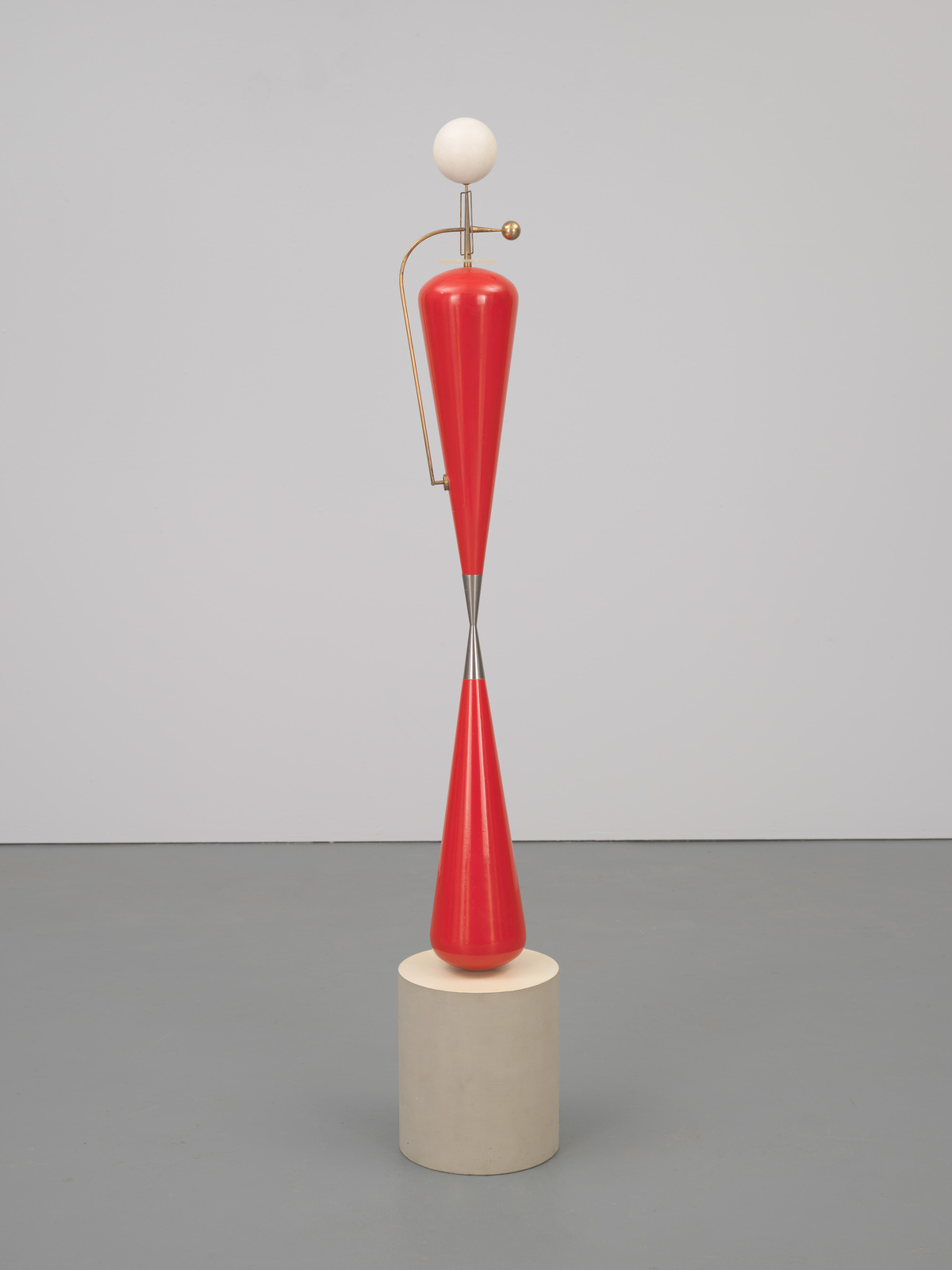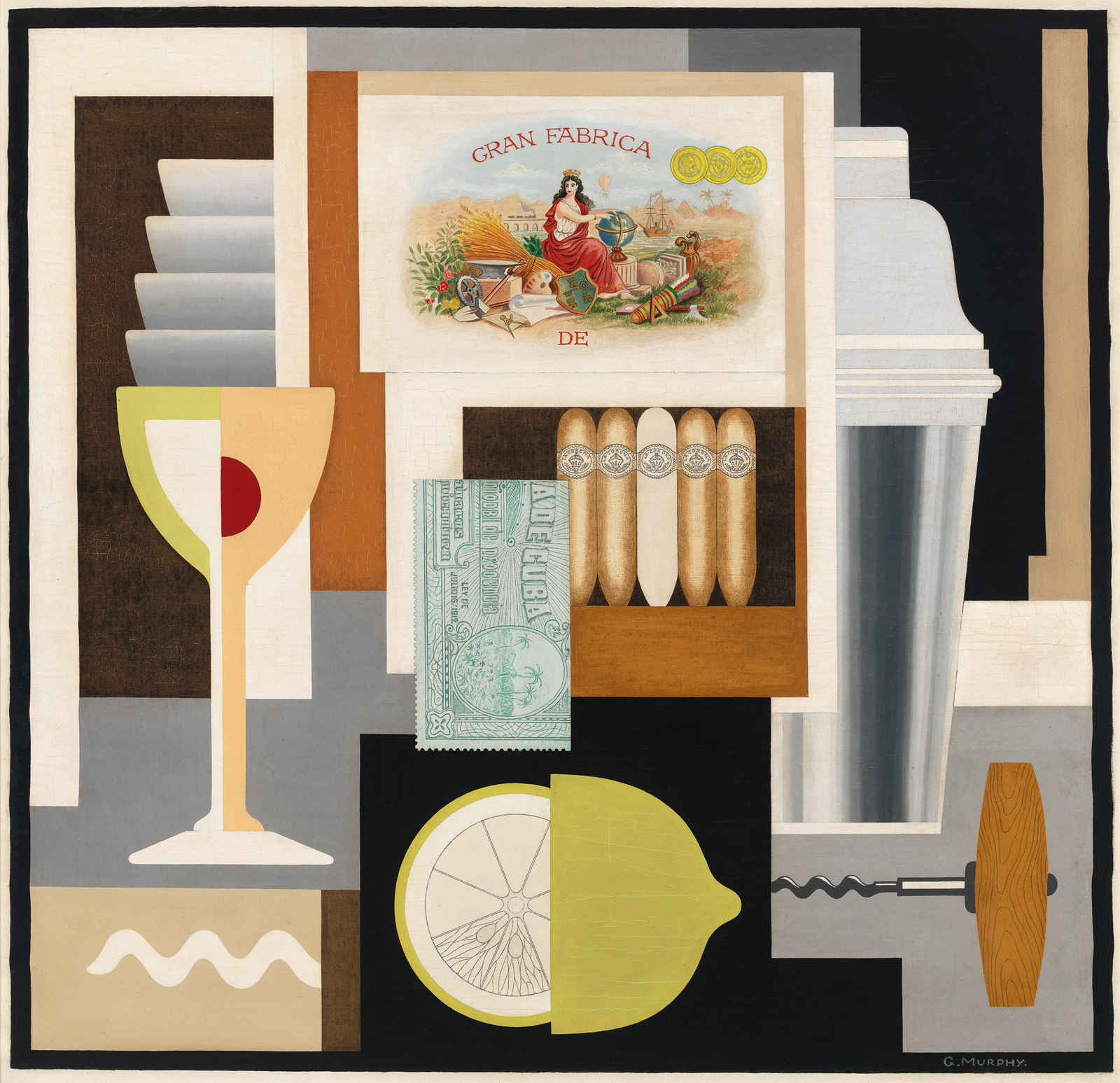With the geometric sculptures he produced before World War II, Theodore Roszak became one of the few American artists to embrace the machine aesthetic of the Bauhaus and Constructivism. For the artists and architects associated with the vanguard Bauhaus school in Weimar, Germany, art was an ally of industry and an agent of social change. These ideals are best exemplified by Roszak’s sculptures—streamlined, geometric forms fabricated from machine-inspired materials such as metal and plastic. The shapes are as precise as mathematical formulas—Bi-Polar in Red resembles an infinity symbol rotated on its axis. Roszak intended the sculpture to suggest scientific models, to invoke “the same natural phenomenon as north vs. south pole. . .male vs. female. . .the bi-polarity of magnetic fields in space.” There is nevertheless something insistently anthropomorphic about Bi-Polar in Red, with its ball of a head and arm-like appendages. Roszak’s sculpture is industrial, yet it remains somehow human, its sleek, torso-like form pointing optimistically toward a future of American innovation.
Not on view
Date
1940
Classification
Sculpture
Medium
Metal, plastic and wood
Dimensions
Overall: 54 5/16 × 8 5/8 × 8 5/8in. (138 × 21.9 × 21.9 cm)
Accession number
79.6a-c
Credit line
Whitney Museum of American Art, New York; purchase, with funds from the Burroughs Wellcome Purchase Fund and the National Endowment for the Arts
Rights and reproductions
© Estate of Theodore Roszak / Licensed by VAGA at Artists Rights Society (ARS), New York



